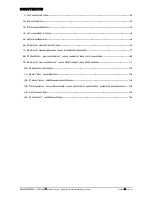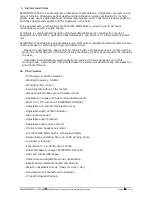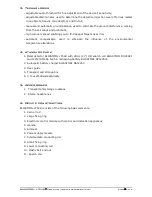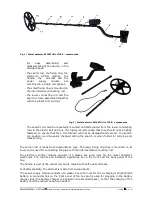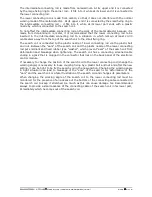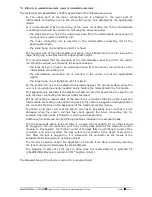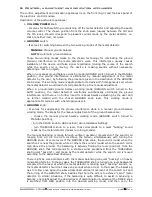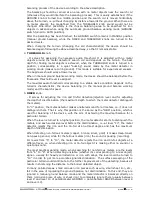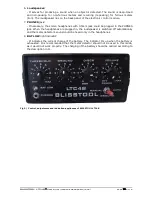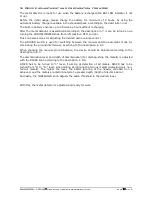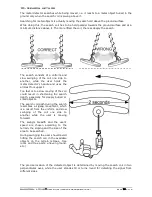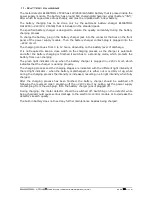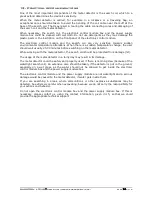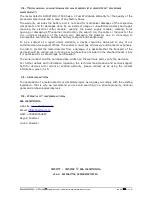
7. Device assembling and disassembling
The metal detector BLISSTOOL LTC48 is assembled in the following sequence:
1.
The upper part of the lower connecting rod is attached to the lower part of
intermediate connecting rod via the small fixing ring, and adjusted at the appropriate
length.
It is recommended that the mounting of the lower connecting rod to the intermediate
connecting rod should be carried out, following the sequence below:
–
the small fixing ring has to be unscrewed loose from the intermediate connecting rod
and put on the lower connecting rod;
–
the lower connecting rod is inserted in the intermediate connecting rod at the
appropriate length;
–
the small fixing ring is tightened until it is fixed.
2.
The upper part of the intermediate connecting rod is attached to the carrier rod via the
large fixing ring, and adjusted at the appropriate height.
It is recommended that the mounting of the intermediate connecting rod to the carrier
rod should be carried out, following the sequence below:
–
the large fixing ring has to be unscrewed loose from the carrier rod and put on the
intermediate connecting rod;
–
the intermediate connecting rod is inserted in the carrier rod at the appropriate
length;
–
the large fixing ring is tightened until it is fixed.
3.
The search coil has to be adjusted horizontally against the ground surface, while the
user is in an upright (working) position and is holding the metal detector by the handle.
This adjustment is possible, if the plastic bolt and nut used for assembling the search coil
with the lower connecting rod are not tightly fastened.
4.
The connecting screened cable of the search coil is winded uniformly up the lower and
intermediate connecting rods and the end jack of the cable is plugged in and tightened on
the connector that lies on the back panel of the electronic control module.
The cable, at its lower end near the search coil, has to be slightly loose, so that it is not
damaged when the search coil has been bent against the lower connecting rod, for
example when the device is folded for carrying and transporting.
Additional, the cable can be fixed through patches included in the standard pack.
The coil cable ends with a jack and there is a single correct position for it so that it could
be plugged in the coil connector, which lies on the back panel of the electronic control
module. In this position, the “hollow” cursor of the jack falls in with “flange” cursor of the
connector, and when inserted, the jack enters the connector into a depth of around 10
mm. After the jack is plugged in, it is screwed to the connector by the means of the
available metal stopping nut, used as a shield.
The incorrect insertion and/or the application of a brute force while incorrectly inserting
the jack could lead to damaging the metal detector.
The plugging in and out of the jack is done while the metal detector is switched off
(VOLUME/POWER knob is turned in “OFF” position (Fig.3)).
The disassembling of the device is carried in a reversed order.
BLISSTOOL LTC48 –
User Guide (version EN200908131904)
Page 7 of 15


